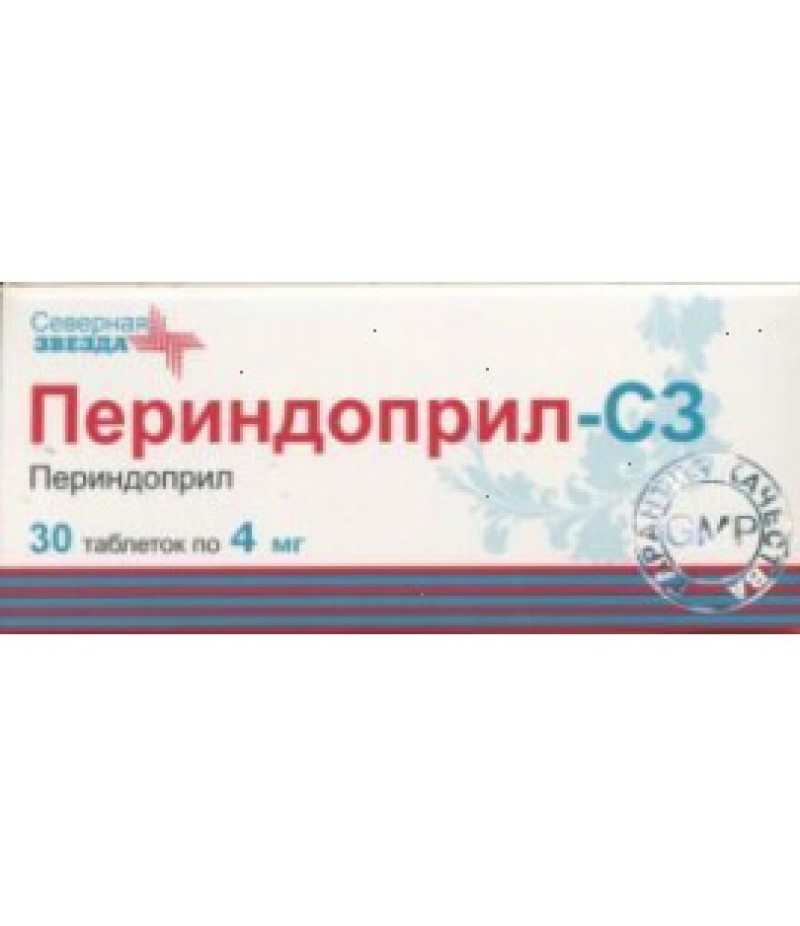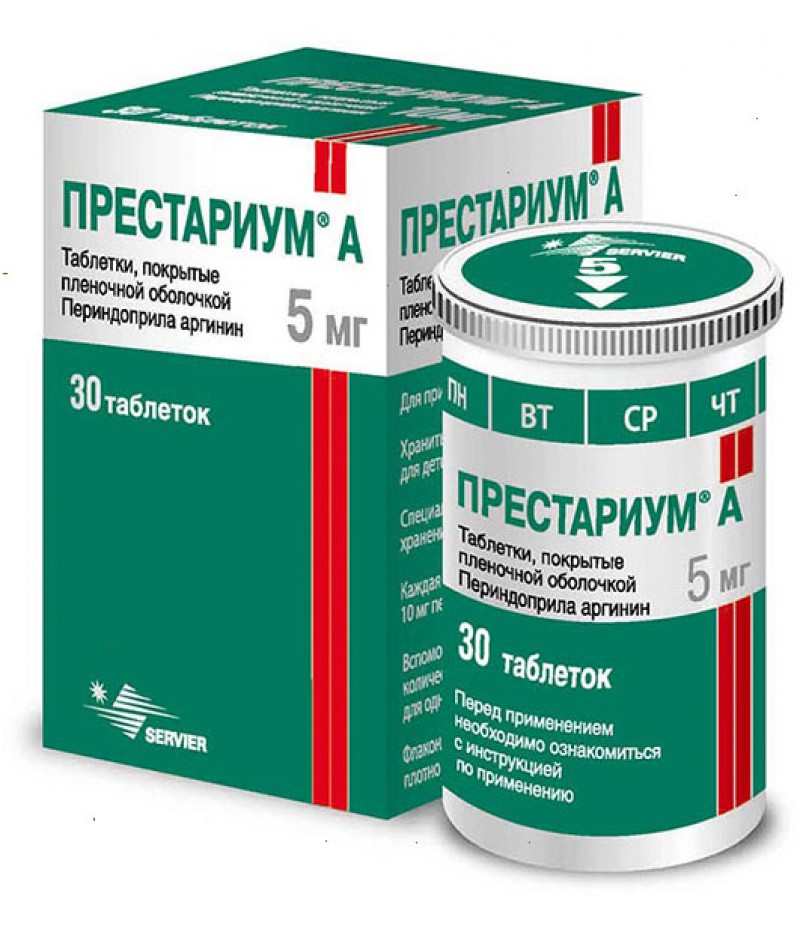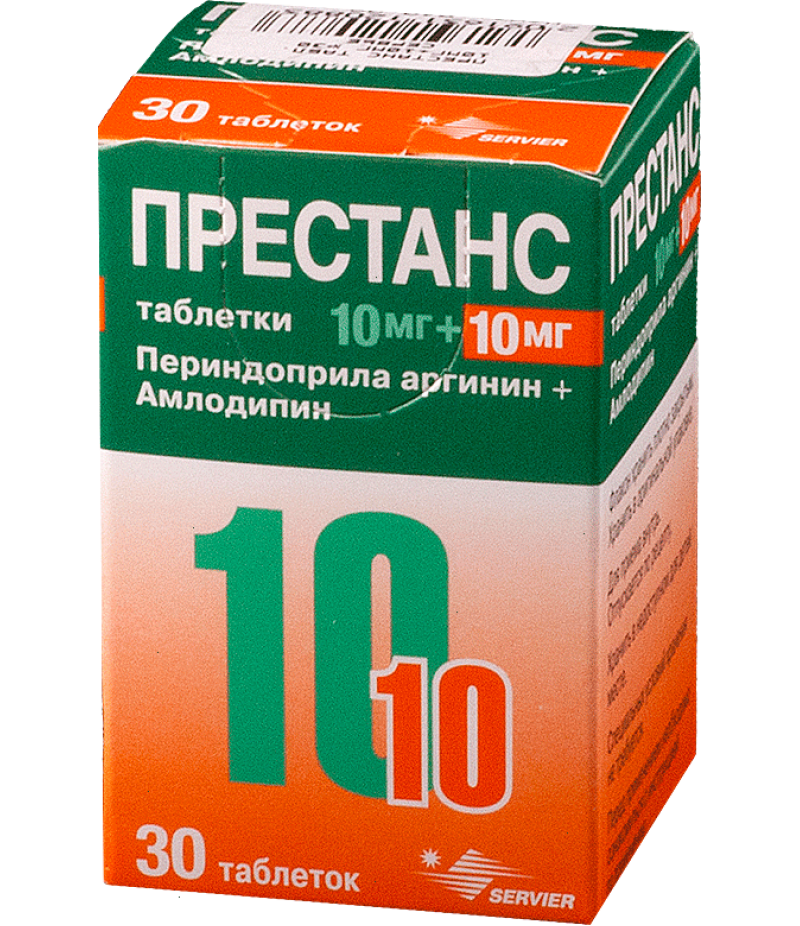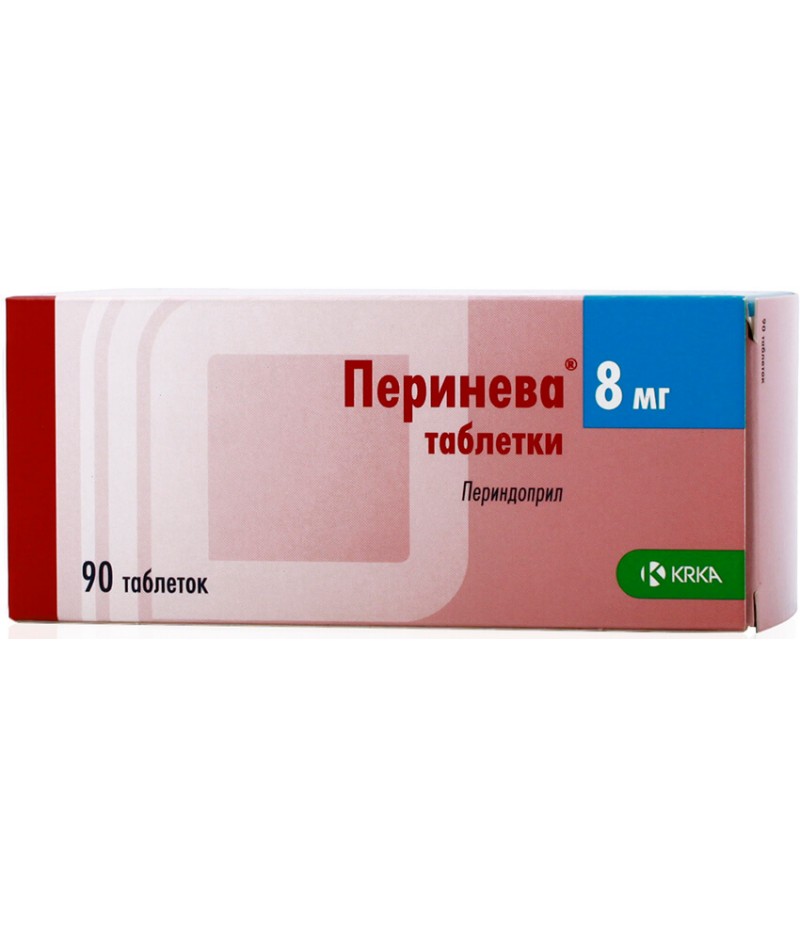Perindopril-sz tabs 4mg #30
- $9.40
- 3 or more $9.18
- Availability:In Stock
Perindopril user manualReed more and buy Perindopril-sz on this pageCompositionPerindopril in the form of tablets contains: erbumine Perindopril (acts as the main active substance) - 4 mg; milk ..
Tags: tabs
Perindopril user manual
Reed more and buy Perindopril-sz on this page
Composition
Perindopril in the form of tablets contains:
erbumine Perindopril (acts as the main active substance) - 4 mg;
milk sugar (lactose);
microcrystalline cellulose (MCC);
croscarmellose or sodium admixture;
magnesium stearate.
Form of issue
Perindopril is a medicinal product that is very popular both among qualified specialists and among the population without medical or pharmaceutical education, however, except for its analogues (combined drugs with Indapamide, Arginine or other active ingredients), it has only one form of release.
Tablets Perindopril white or close to white color of a flat cylindrical shape with a characteristic facet on one side. The drug is supplied in blisters of aluminum foil or PVC, designed for 10 pieces, or in a plastic jar with 10 or 30 tablets. A cardboard box is packed with 1 or 3 contour mesh plates or one polymer jar with detailed instructions for use.
pharmachologic effect
Perindopril is a pharmaceutical preparation that belongs to the group of angiotensin-converting enzyme inhibitors. Due to the chemical interaction of this catalyst with zinc ions, its complete inactivation occurs. As a result of such influences, the conversion of angiotensin I into angiotensin II is inhibited, which has a vasoconstrictive effect (due to the narrowing of the vascular bed, the blood pressure rises). Suppression of ACE is accompanied by effects on the kallikrein-kinin system and prostaglandins - their circulating and tissue concentrations are increased.
Active metabolites Perindopril affect the natural hormonal background of the human body. The production of aldosterone (the result of interaction with the renin-angiotensin-aldosterone system of the kidneys) decreases, the release of norepinephrine from the sympathetic nerve endings and the formation of endothelin by the inner layer of the vascular wall are suppressed. All these changes strengthen the hypotensive effect of the pharmaceutical preparation, allowing, as they say, "to attack on all fronts," which entails a persistent drop in blood pressure.
The drug has some protective properties to some extent - Perindopril promotes regeneration of the elasticity of large blood vessels in the arterial bed. The mechanism of this pharmaceutical effect lies in reducing the excess amount of collagen occupying the subendothelial layer of the structure. Thus, the main vessels become stronger in the physiological sense and can react more actively to changes in blood pressure.
The cardiac effects of the ACE inhibitor consist in decreasing the pre and post loading of the myocardium (the overall peripheral resistance of the vessels and the volume of blood flow decrease), which normalizes the work of the muscular organ, increases its effectiveness - the minute volume of blood increases without increasing the heart rate. Peripheral tissues and organs improve their trophism and regional blood flow, which affects the condition of the entire body of the patient undergoing a course of conservative therapy.
If the muscle pump is prone to such a pathology as chronic heart failure, then the degree of clinical signs of this nosological unit is reduced. Tolerance to exercise on the contrary, is growing rapidly. Clinical studies were conducted using a veloergometric test, which confirmed the validity of therapeutic effects in the treatment of chronic heart diseases.
Pharmacodynamics and pharmacokinetics
The drug is used orally, after which 25 percent of the constituent components are absorbed from the cavity of the gastrointestinal tract. Bioavailability of the drug is 65-70 percent. Interesting and even somewhat unusual is the time to reach the maximum plasma concentration. The greatest amount of inactive substances reaches 1 hour, and the biologically active perindoprilat, the product of the active ingredient metabolism in the internal environment of the body (up to 20% of Perindopril is metabolized to this form), only three to four hours after taking the drug.
Perindoprilat is able to bind to blood plasma proteins to a small extent and with the angiotensin converting enzyme (slightly less than 30 percent of the active fraction). The volume of distribution of the free metabolite is 0.2 l / kg. The product of metabolism is mainly secreted by the kidneys with a half-life period of 3-5 hours. The same part that binds to the ACE dislocates extremely slowly, which prolongs the effective half-life period to 25 hours. Cumulation of the active substance is not observed (the amount of perindoprilat and its half-life in no way changes with the repeated administration of the drug).
Active excretion of the active metabolite can be slowed down by physiological deterioration of the renal apparatus in elderly people or in chronic cardiac and renal insufficiency, therefore, a strict dose adjustment is required based on the level of creatine kinase (constant diagnostic tests are required during the course of treatment if the patient falls into this risk group ). The dialysis clearance is 70 ml per minute.
Indications for use
Indications for use are narrow-profile for the therapeutic hospital due to the specific therapeutic effect of the drug Perindopril:
arterial hypertension;
chronic heart failure;
hypertension of the renovascular etiology;
prevention of recurrent stroke or stroke after transient ischemic attack;
stable ischemic heart disease.
Contraindications
increased individual sensitivity, acquired or hereditary intolerance to the constituent components of the pharmaceutical preparation or to the whole group of angiotensin-converting enzyme inhibitors;
period of pregnancy;
lactation or breastfeeding;
angioneurotic edema of hereditary or idiopathic origin;
the drug is not used in pediatric practice (before reaching the age of 18 years).
Separately, it should be noted that there are a number of pathological conditions when the use of Perindopril is not completely safe and requires constant diagnostic control of all possible indicators of the organism with the conditions of a medical hospital. The list consists of the following diseases:
aortic or mitral stenosis;
constrictive pericarditis;
leukopenia;
severe autoimmune nosological units of connective tissue (in particular systemic lupus erythematosus or scleroderma);
hyponatremia;
presence of a transplanted donor kidney;
hypertrophic cardiomyopathy;
thrombocytopenia;
cerebrovascular diseases;
obliterating atherosclerosis or narrowing the lumen of vessels of another origin (especially the channel feeding the heart muscle);
bilateral stenosis of arteriolar kidneys;
hyperkalemia;
moderate or severe stage of kidney failure;
dehydration and exsicosis.
Side effects
Perindopril is an extremely active pharmaceutical preparation, which, in addition to the therapeutic effects, is indicated by the incidence of adverse reactions during treatment. It is 1-10 percent of all cases of conservative therapy. Side effects of the constituent components can manifest themselves as a violation of various body systems:
The digestive tract: nausea, vomiting, indigestion, dry mouth, diarrhea, decreased appetite, cholestatic jaundice, pancreatic inflammation, intestinal edema.
From the cardiovascular system: excessive reduction in blood pressure with the development of orthostatic hypotension, arrhythmia, angina, stroke and myocardial infarction.
On the part of the urinary system: a decrease in the functional capacity of the kidneys, acute renal failure.
Respiratory organs: "dry" cough, rhinorrhea, difficulty of free inspiration and exhalation, eosinophilic pneumonia, bronchospasm.
From the side of the central nervous system: headache, asthenia, dizziness, fatigue, imbalance of sleep and wakefulness, decreased mood, periodic ringing in the ears, visual impairment, muscle cramps and paresthesia.
Allergic reactions: pruritus or rash, hives, angioedema, multiforme exudative erythema.
From other systems: increased sweating, a violation of sexual function.
Changes in laboratory indices - hypercreatininaemia, hypogemoglobinemia, thrombocytopenia, proteinuria, hyperkalemia, hyperuricemia, neutropenia, leukopenia (agranulocytosis), pancytopenia, increase in the percentage ratio and activity of liver enzymes, hemolytic anemia in the presence of deficiency of glucose-6-phosphate dehydrogenase.
Perindopril, instructions for use (Method and dosage)
Pharmaceutical preparation is used orally at one time (1 time per day). Treatment, as a rule, starts with a starting dosage of 1-2 mg per day. Further, depending on the indications for therapy, the instructions for the use of Perindopril are somewhat different:
with congestive heart failure, conservative sanation is continued with the optimal dosage of 2-4 mg per day;
arterial hypertension is treatable with higher amounts of the drug taken, with this pathology, 4-8 mg per day is used, the increase in dosage should be gradual, within 3-4 weeks;
Renovascular hypertension is treatable at 2 mg per day;
prevention of stroke is carried out according to a special scheme: first 2 mg in knocking for 2 weeks, then 4 mg per day for the same duration of time;
the treatment of stable coronary heart disease begins at a starting dose of 4 mg per day for 2 weeks, and then the amount of the drug taken increases to 8 mg per day.
Overdose
There are known reliable clinical cases of overdose with a pharmaceutical preparation, which, as a rule, is manifested by the following list of symptoms:
excessive decrease in blood pressure;
shock;
stupor;
bradycardia;
violation of electrolyte balance;
renal insufficiency.
There is no specific antagonist for the medicament of an angry pharmaceutical product. With this complex of adverse effects of treatment, which accompanies elevated plasma concentrations of active components, symptomatic therapy is used. The following medical actions are effective:
gastric lavage;
horizontal position with an elevated lower end to restore the blood pressure level;
application of enterosorbents;
correction of water-electrolyte balance by isotonic solution of sodium chloride;
atropine with bradycardia;
effective use of hemodialysis (use of high permeability polyacrylonitrile membranes is not recommended);
with an especially severe pathological pattern of overdose, implantation of an artificial pacemaker can be used.
Interaction
Perindopril is an extremely active pharmaceutical drug (this parameter is even listed in List B of the International Drug Registry), therefore, it has a long list of interactions of a different nature. First of all, it should be noted products that enhance the hypotensive effect of the ACE inhibitor (excessive lowering of blood pressure can lead to orthostatic hypotension or acute cerebral circulatory insufficiency):
means that are used for anesthesia;
muscle relaxants;
anti-hypertensive drugs of any mechanism of action;
loop and thiazide diuretics;
tricyclic antidepressants;
group of antipsychotic drugs;
organic nitrates;
nonselective monoamine reuptake inhibitors.
Opposite influence, that is, a reduction in the hypotensive effect, may be provided by indomethacin.
The complex use of Perindopril with pharmaceuticals such as potassium-sparing diuretics, digitalis glycosides, and potassium-based products (for example, active biological supplements) increase the risk of hyperkalemia and all the symptoms resulting from this pathological state.
Separately, it is worth noting the interaction with Nimodipine, since it is clinically important that cardiac rhythm disturbance and myocardial insufficiency increase when combined use of drugs in conservative therapy.
Also acute should be patients with diabetes, because Perindopril increases manifestations of sugar-reducing effect of antidiabetic drugs. Accordingly, there is a risk of developing hypoglycemia and coma, as its consequences.
Terms of sale
You can buy Perindopril without a prescription.
Storage conditions
Keep Perindopril should be kept dry, out of reach of children, and protected from direct sunlight. The temperature regime of optimal storage should not exceed 25 degrees Celsius.
Shelf life - 2 years.
special instructions
Using ACE inhibitors and Perindopril in particular, there is a risk of developing arterial hypotension, headache, dizziness and visual impairment, therefore, during conservative treatment it is necessary to abandon self-management of vehicles or other activities that require increased attention, speed and clarity of motor reactions .
Children
The drug is not used in pediatric practices until the age of 18 years.
With alcohol
During the course of conservative therapy with the drug should completely eliminate alcoholic beverages, since alcohol enhances the hypotensive effect of the drug, which can adversely affect the body and lead to severe consequences (sudden loss of consciousness, acute failure of cerebral or coronary circulation, etc.).
In pregnancy and lactation
Perindopril is contraindicated for use during pregnancy, lactation or breastfeeding.
Reviews about Perindopril
Reports at pharmaceutical forums unanimously confirm the positive effect of the drug on the parameters of blood pressure and the work of the heart as a whole. Such an active substance Perindopril allows you to cope with serious pathology for a relatively short course of conservative therapy. People who took the pharmaceutical drug speak about it extremely well, because besides the main therapeutic effects, it improves the trophic and the delivery of useful nutrients to all peripheral tissues and organs, cleans the macro circulatory channel, which can not but affect the overall well-being in a positive light .
The doctors' comments on Perindopril confirm the opinion of grateful patients from a professional point of view. However, there are several points that somewhat cloud the opinion of qualified specialists. First of all, this frequent development of side effects during the course of drug treatment, because the occurrence of unwanted reactions is catastrophic large 1-10 percent. Of course, the vast majority of adverse effects are coped quite easily, but this creates an additional burden on the patient's body and does not always pass unnoticed.
Therefore, in therapeutic hospitals more and more often Perindopril is replaced by combined pharmaceutical components. So, for example, in combination with arginine, the number of adverse effects of conservative treatment does not increase, and the therapeutic effect on the contrary, is irresistibly growing.





